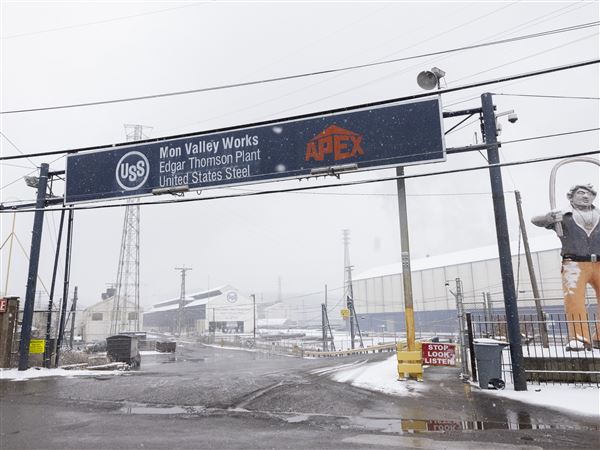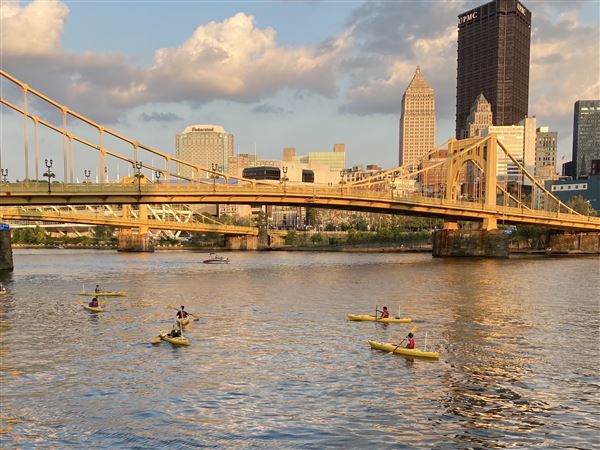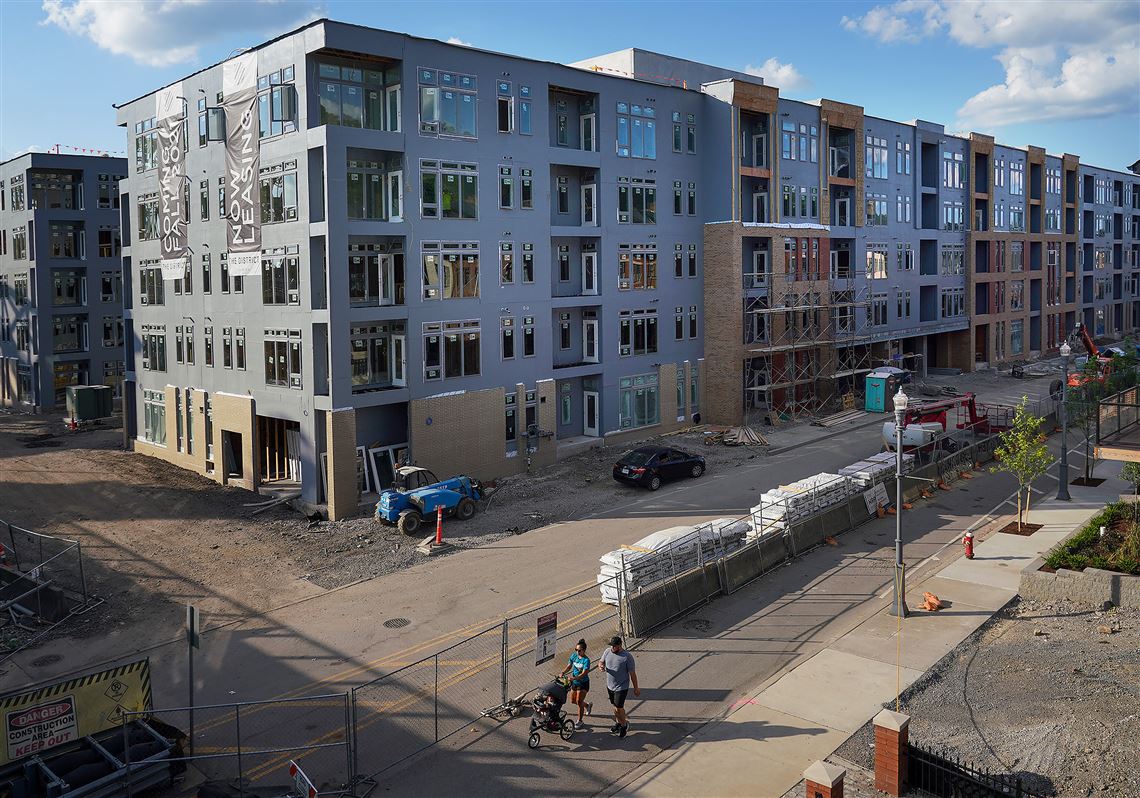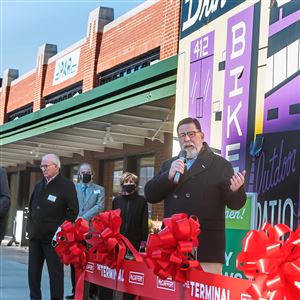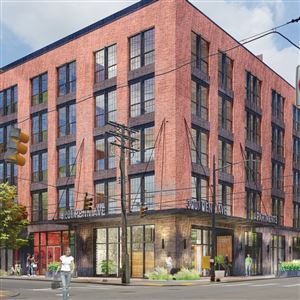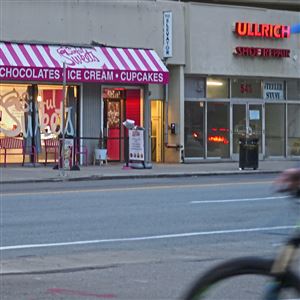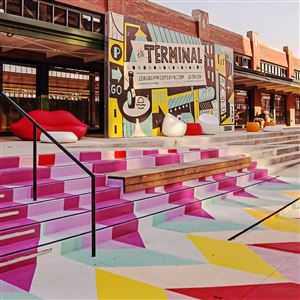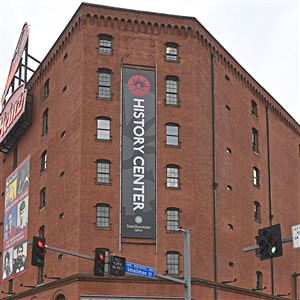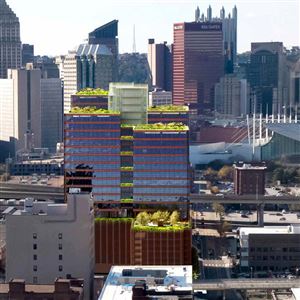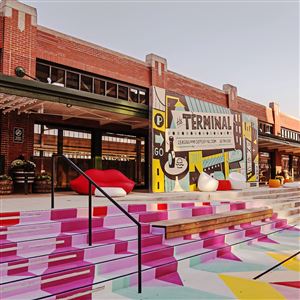The Strip District has been one of the region’s hottest markets over the past decade — more than a billion dollars worth of sizzling, in fact.
Since 2011, a cool $1.5 billion has been invested in the neighborhood, with about half of that representing projects under construction.
The residential population has soared by 150% over the past five years, with 1,920 people calling the Strip home.
And even with all the changes, the Strip and its funky Penn Avenue commercial corridor filled with generations-old retailers remain a major tourist draw — with 2.8 million people visiting annually before the COVID-19 pandemic.
They are among the major findings in the first State of the Strip District report released Tuesday by the Strip District Neighbors community group.
The 14-page report puts some heft and context to the explosive development that has been taking place in the neighborhood, with office buildings and residential units going up at a dizzying rate.
Overall, in the past 10 years, the Strip has seen $624 million in completed development, with another $790.1 million currently under construction. Another $98 million is in the planning stages.
Even the pandemic couldn’t slow down the Strip. The report found that building permit volume jumped 36% and permit value 89% in 2020 compared to the previous year.
For Pamela Austin, Strip District Neighbors president and board chair, the report basically quantified what she had been seeing with her own eyes after arriving about seven years ago when she worked for Chicago-based McCaffery Interests, which redeveloped the iconic produce terminal.
“It confirmed what we all kind of knew,” she said.
Major projects over the past decade have included the $62.6 million terminal rehab; Oxford Development Company’s 3 Crossings office and residential complex, with another phase under construction; the District 15 office building, home to Facebook; and 1600 Smallman across from the terminal on Smallman Street.
In addition, dozens of townhouses have been built behind the terminal and Cleveland-based NRP Group is in the second phase of apartment construction on the Allegheny riverfront in conjunction with the Buncher Company.
The report found that 1.2 million square feet of office space is currently under construction, with another 300,000 square feet in the planning stages.
Office projects underway include the 265,000-square-foot Vision on Fifteenth next to District 15; the 145,867-square-foot 75 Hopper Place in the latest phase of 3 Crossings; and Factory 26, a warehouse renovation being done by Oxford Development.
Furthermore, New York-based Acram Group, formerly JMC Holdings, has started demolishing the New Federal Cold Storage warehouse, the one with the giant smiling fish sign on the side, to clear the way for an office tower ranging in height from 19 to 23 floors.
On the residential side, projects under construction include the District, a 442-unit apartment complex being done by NRP at Waterfront Place and 21st Street and Helm on the Allegheny, a partnership between Oxford and SteelStreet Capital Partners featuring 220 units, including 33 affordable and 32 shared co-living.
Since 2015, the Strip’s residential population has more than doubled, according to the report. The neighborhood currently houses 1,425 rental and condo units, with another 730 being built and 530 planned. Of note, 62% of the apartments were delivered within the past five years.
“Once these new units are completed, the Strip might see its current residential population double again within the next 2-3 years,” the report predicted.
Average apartment rents range from $1,511 for a studio to $1,815 for a one bedroom and $2,481 for a two bedroom. The median list price of a home is $484,900.
However, the pandemic has had an impact on Strip living, with apartment occupancy dropping about by 5% to 95%, the report found.
As with elsewhere, it also has had a devastating effect on the historic Penn Avenue shopping district, with traffic declining 40% last year compared to 2019. While traffic has been returning lately, it’s still about 20% behind pre-COVID levels, the report stated.
Coupled with the decline, seven restaurants and retailers closed for good, although that has been more than offset by the opening of 11 retailers and restaurants, including five in the rehabbed produce terminal, which debuted this year.
According to the report, 91% of the Strip’s restaurants and retailers are locally owned. The rapid growth in the neighborhood has sparked concerns in the past about possible commercial gentrification.
The report noted that the Strip has become the Pittsburgh home for a number of leading tech and autonomous vehicle firms, including Honeywell Robotics, Facebook’s artificial intelligence team, Argo AI, Bombardier, Smith + Nephew, and Aurora Innovation, which is taking all of the space at 1600 Smallman.
The 2021 report is similar to the State of Downtown report issued each year by the Pittsburgh Downtown Partnership, which helped in preparing the Strip edition.
"The Strip District has experienced significant growth over the last decade" Caitlin Fadgen, the PDP’s director of economic development initiatives, said in a statement. "The PDP was pleased to partner with Strip District Neighbors to produce this report as the relationship between our neighborhoods is even more important now than ever."
Ms. Austin said she discovered the need for such a report while working for McCaffery and trying to sell potential tenants on the Strip. At the time, there wasn’t much data to show to prospects.
Such information also can be helpful in deciding whether to upgrade or expand businesses or stores, she noted. “It helps people make better decisions. We need a benchmark,” she said.
And while Ms. Austin was not surprised by what the report found, the level of growth over the last decade still was eye-opening.
“It’s been dramatic, for sure,” she said.
Mark Belko: mbelko@post-gazette.com or 412-263-1262.
First Published: June 29, 2021, 10:34 p.m.
Updated: June 30, 2021, 9:27 a.m.
